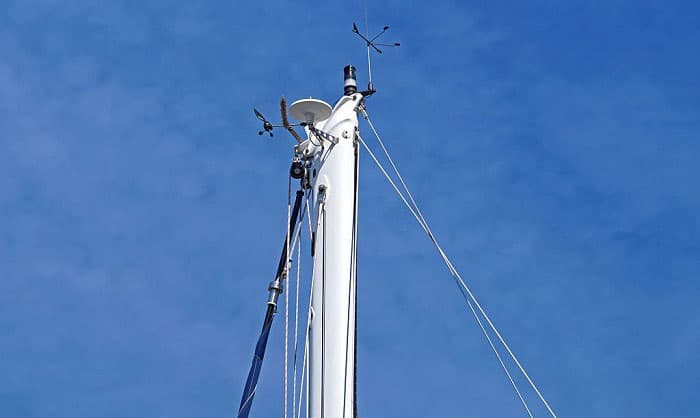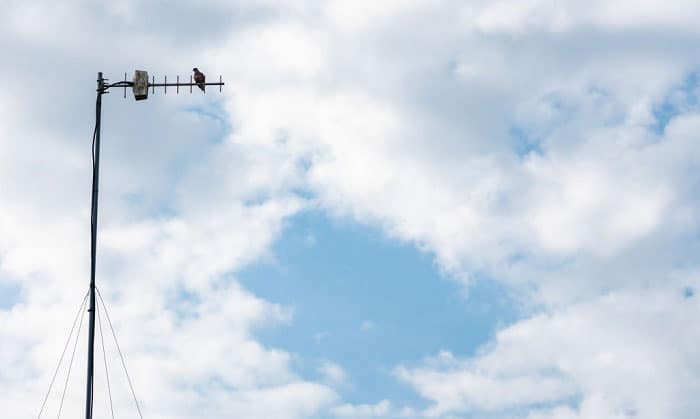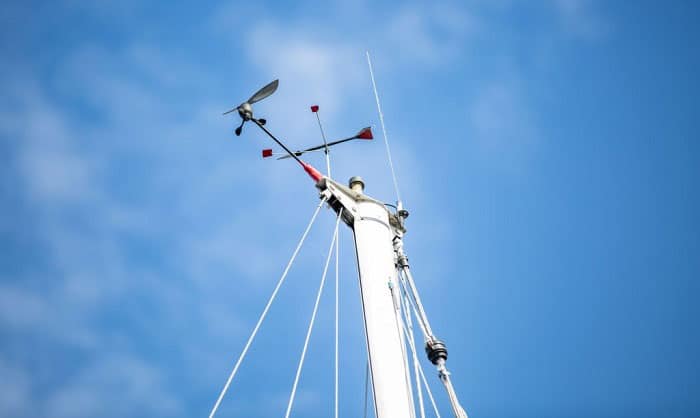
The VHF radio usually serves as the only means of communication between you and others when you’re out on the water. Since it’s such an important communication device on the boat, there are some things that every boat owner should know about this essential piece of equipment.
In this guide, we’ll cover some important things to know about these radios, including questions such as “why is the height of a VHF radio antenna important?” We’ll also take a brief look at how they work by sending and receiving the signal of communication.
Keep reading.
Table of Contents
The Importance of VHF Antenna Height
Due to these radios’ line of sight requirement, a clear path is necessary between the transmitting and receiving points. Various placement conditions must be considered to ensure having this clear path. So, for two antennas to communicate within each other’s sight, VH antenna height is important.
Other than the height of the antenna, its placement is also essential. Placing the VHF antenna at a higher elevation gives an increased range that radio can cover. A higher point of placement will also allow the signal we transmit to clear most obstacles such as trees and other boats.
Let’s imagine two people. To talk to each other, these people need to see each other, and if they cannot visually confirm each other, communication fails. This is exactly how VHF antennas work; the transmission of VHF signals is dependent on this established line of sight.
Correlation Between Antenna Height and Transmission Range

As stated earlier, the height of the VHF antenna directly affects the range that the radio covers. We can calculate the necessary height for specific range coverages using a VHF radio range calculator; some are available online.
If you would like to try calculating the range yourself, you can use the formula below using a square root.
Range (statute miles) =√ height(ft) x 1.22
However, this formula only calculates the VHF transmissions range over a flat surface. Also, this formula uses statue miles for its calculation. We use nautical miles instead for marine situations, so some adjustment to the formula needs to be made.
Range (NM) =√ height
This is a much simpler formula, but it should be noted that there is a margin of error when using this formula. As 1 statute mile is equal to around 1.15 nautical miles, the adjustment in the second formula should at least produce a close enough result that would allow us a good estimate of the transmission range.
It should also be noted that the height of both transmitting and even the receiving antenna are factors in the range calculation. In the case of the range between two VHF antennas, the formula would be as follows.
Range (NM) = √ height (transmitter) + √ height (receiver)
Parts of a VHF Radio Communication Device

What is a VHF Radio
VHF radios are communication devices that allow for long-distance communication. VHF, which stands for very high frequency, uses a VHF frequency range of radio spectrum, waves from 30 to 300 Mhz, and is used in communication and local stations.
Let’s take a quick look at the main parts of a marine VHF radio. Understanding what these parts do will make it easier to understand how this type of radio works and will allow us to consider important aspects with more certainty.
1. Radio unit
This is the unit that transmits and receives radio waves. Modern radios have a screen, usually an LCD, that displays volume and the current channel. Switching between channels can also be done here.
2. Antenna
The VHF antenna amplifies the radio unit’s ability to send and receive the VHF signal. This should be placed higher for better transmission.
3. Power source
This changes depending on the type of radio. Mobile models have a battery but stationary models used on a boat would be hooked up to the boat’s power supply.
4. DSC radio
An MMSI or Marine Mobile Service Identity is a 9-digit number unique to a boat that is assigned to the DSC or the Digital Selective Calling radio. Distress calls are also handled by this part of the unit.
5. AIS
The AIS unit or Automatic Identification System uses a GPS to send information such as location as well as other relevant data. It can also hold an MMSI.
DB Rating
Another important factor in determining transmission range is the dB rating or antenna gain, dB stands for decibel. There are low and high dB ratings to consider, where a higher rating extends to a longer range that radio waves are transmitted. However, this is not always ideal.
Low power transmits the signal in a spherical area, this means the data transmission is made in many directions. On the other hand, high power transmits in a disc shape; the signal is transmitted further horizontally but with extreme loss in other directions.
The higher the dB rating goes, the more horizontal gain but also more loss in other areas. Typical dB ratings are 3, 6, and 9 dB. A higher dB rating also makes it easier for the transmitted signal to be picked up and pointing it in the correct direction makes it extremely effective.
The coaxial cable connecting the antenna to the radio unit also factors into the rating as longer cables result in dB loss. While a better quality cable will help mitigate loss, it is better to manage cable length to below a certain length that changes depending on your unit.
It should be noted that dB takes a backseat to VHF antenna height though it is equally important when it comes to considerations for transmissions and receiving range.
Pro Tips for Better Radio Communication
Step 1: Place the antenna high and steady
As discussed, VHF antenna heights are important. However, an antenna mounted steadily will also benefit radio communication and minimize disruption and interference, not to mention keep damage from high-velocity winds in check.
Step 2: Keep wires and cables straight
Aside from cables being too long, winding wires and cables also create interference in VHF communications. Try to keep them as straight as possible to minimize the occurrence of any problem.
Step 3: Place the antenna away from light sources
Exposure to direct sunlight affects antenna performance. While there’s not much that can be done about the sun, keep other light sources away because these will affect the antenna as well.
Step 4: Keep proper distance between antennas
A distance of around 5 feet or more should be kept between antennas to minimize any interference. This point may usually not be a problem for smaller boats, but it’s a good thing to keep in mind.
Step 5: Perform necessary maintenance regularly
Check your installation regularly to make sure that everything is in working condition and that it receives and transmits any important communication signal. Check to see that mountings are secure and wires and cables are all in place.
It’s also a good idea to check the antenna’s integrity and to keep a backup antenna on board just in case.
Step 6: Don’t place antennas at an angle
Keep any antenna straight when placing. This will ensure that any signal is sent and received properly and in an optimum way.
Conclusion
Such an important piece of boating equipment as the radio should be given proper attention. Hopefully, we could provide you with additional insight into the important things to know about your primary communication device, including “why is the height of a VHF radio antenna important?”
Please share this guide with others who may be interested to learn more as well. Feel free to leave your comments below as we’d like to hear from you.

“My intention from the first day establishing Boating Basics Online is to provide as much help as possible for boaters who want to experience a first safe and convenient trip. So feel free to join us and share your beautiful journeys to the sea!”
